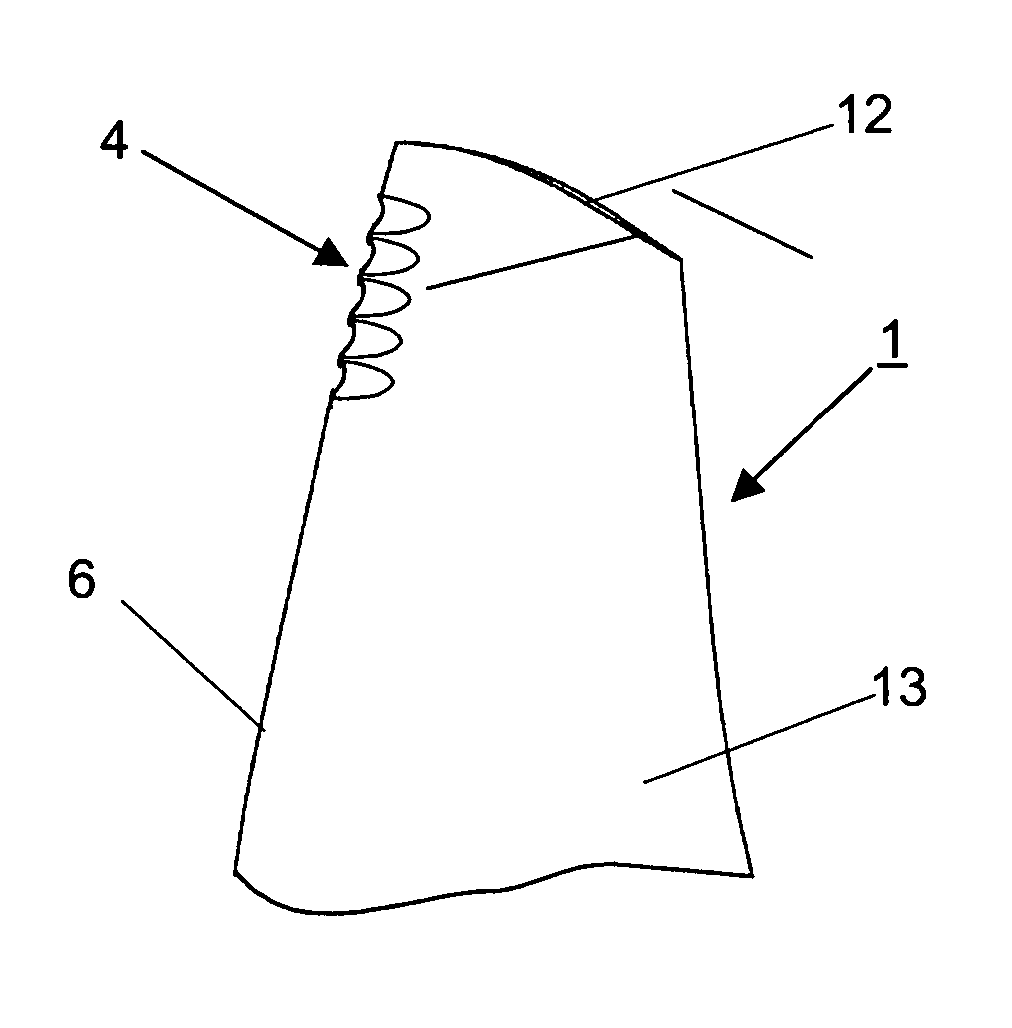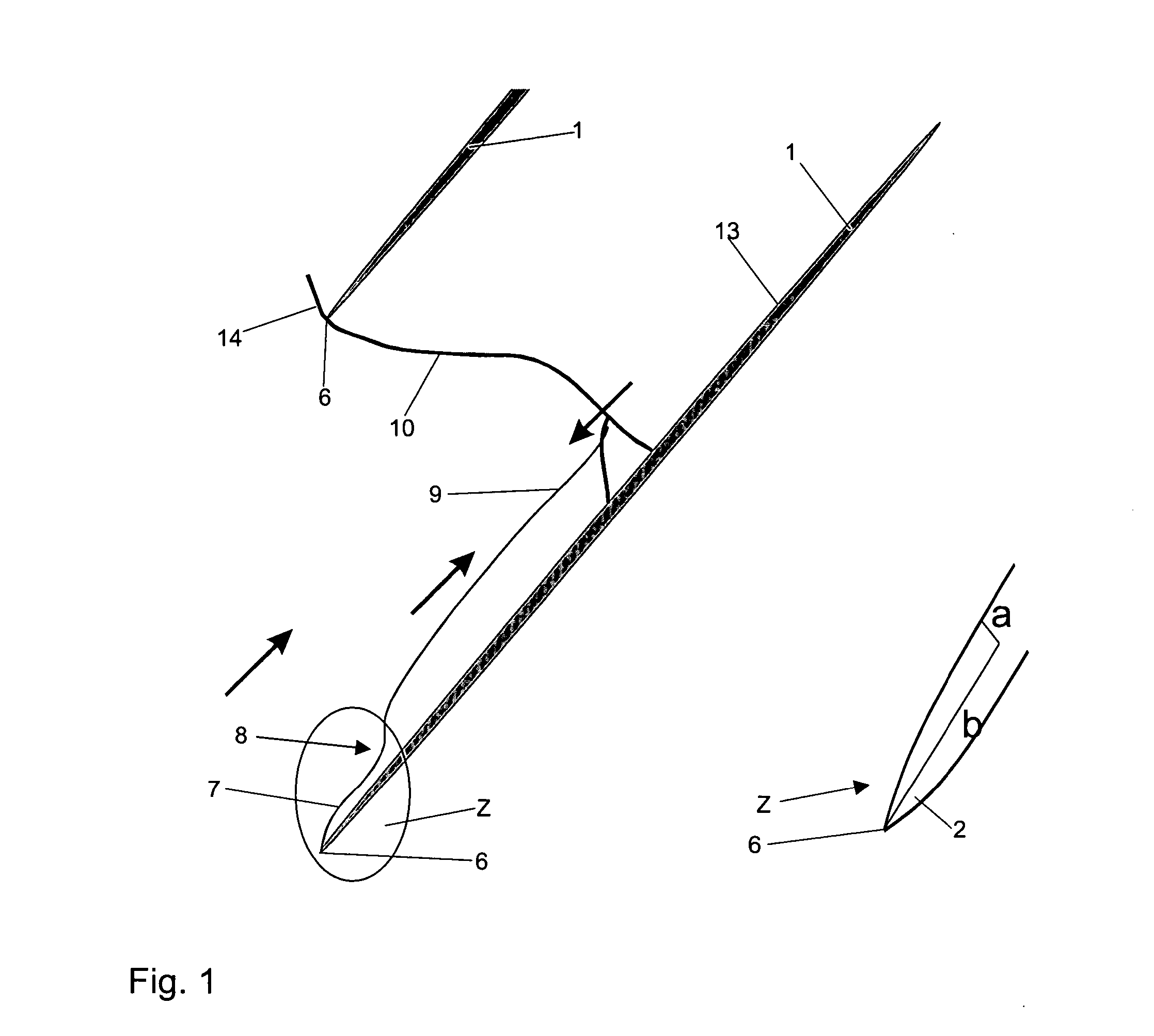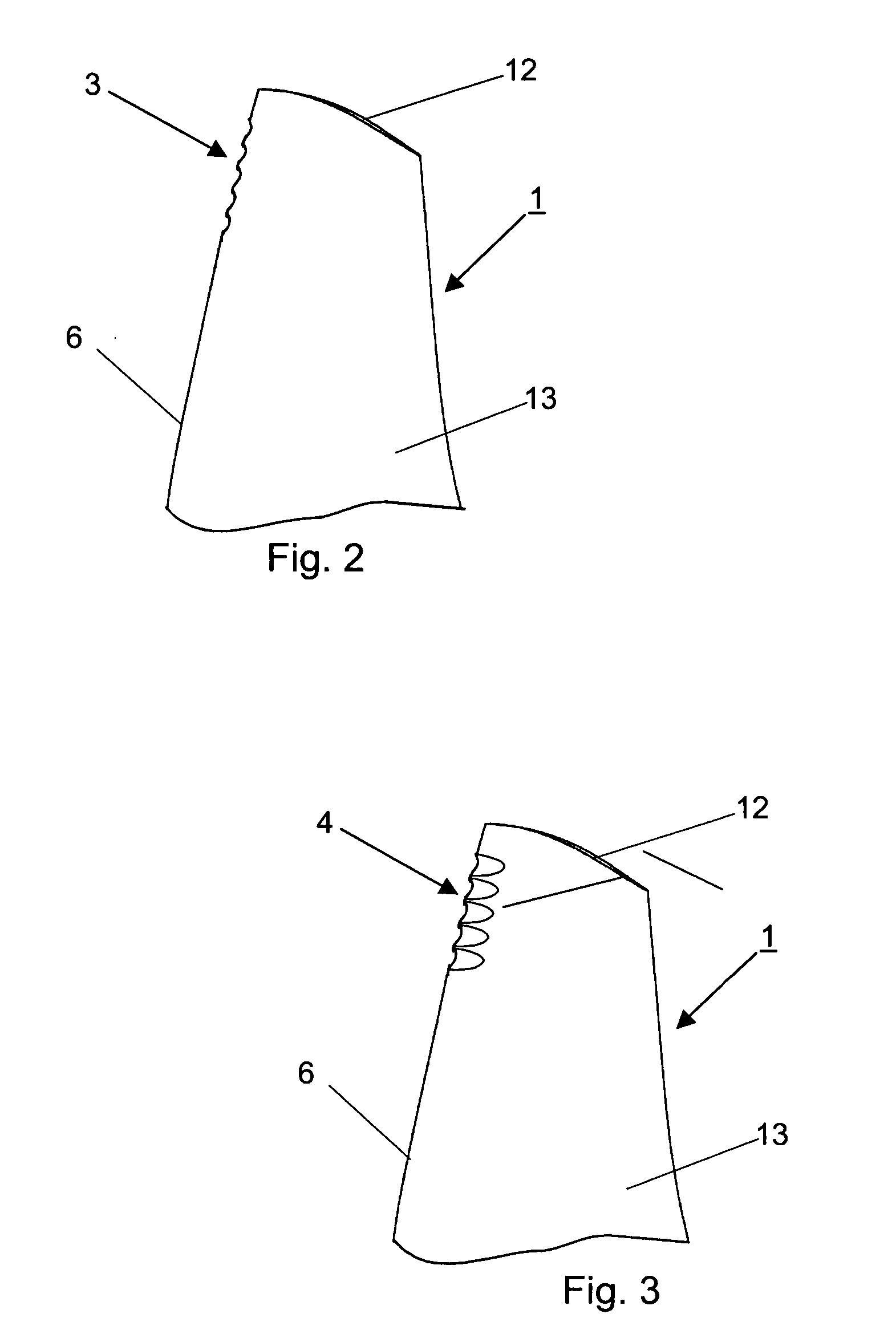Compressor blade with reduced aerodynamic blade excitation
- Summary
- Abstract
- Description
- Claims
- Application Information
AI Technical Summary
Benefits of technology
Problems solved by technology
Method used
Image
Examples
Embodiment Construction
[0016] The compressor blades 1 illustrated in FIGS. 1 to 4 feature in an upper area, in relation to the blade tip 12, a specific form (2 to 5) of the blade leading edge 6 by which, as shown in FIG. 1, attachment of the leading edge shock wave 14 immediately at the blade leading edge 6 and, consequently, the boundary layer flow on the suction side 13 of the compressor blade 1 shown in FIG. 1 is achieved in this blade area. This means that the situation shown in FIG. 1 applies similarly to the compressor blades 1 shown in FIGS. 2 to 4.
[0017] According to the blade variant shown in FIG. 1, the blade leading edge has an elliptic (or also a parabolic) cross-sectional profile 2, with the ratio of the two semi-axes a / b being smaller than or equal to 1 / 4. This means that the curvature radius of the leading edge is small and the blade thickness correspondingly low. The cross-section of the compressor blade 1 is continuously curved.
[0018] In the case of the blade variant according to FIG. ...
PUM
 Login to View More
Login to View More Abstract
Description
Claims
Application Information
 Login to View More
Login to View More - R&D
- Intellectual Property
- Life Sciences
- Materials
- Tech Scout
- Unparalleled Data Quality
- Higher Quality Content
- 60% Fewer Hallucinations
Browse by: Latest US Patents, China's latest patents, Technical Efficacy Thesaurus, Application Domain, Technology Topic, Popular Technical Reports.
© 2025 PatSnap. All rights reserved.Legal|Privacy policy|Modern Slavery Act Transparency Statement|Sitemap|About US| Contact US: help@patsnap.com



